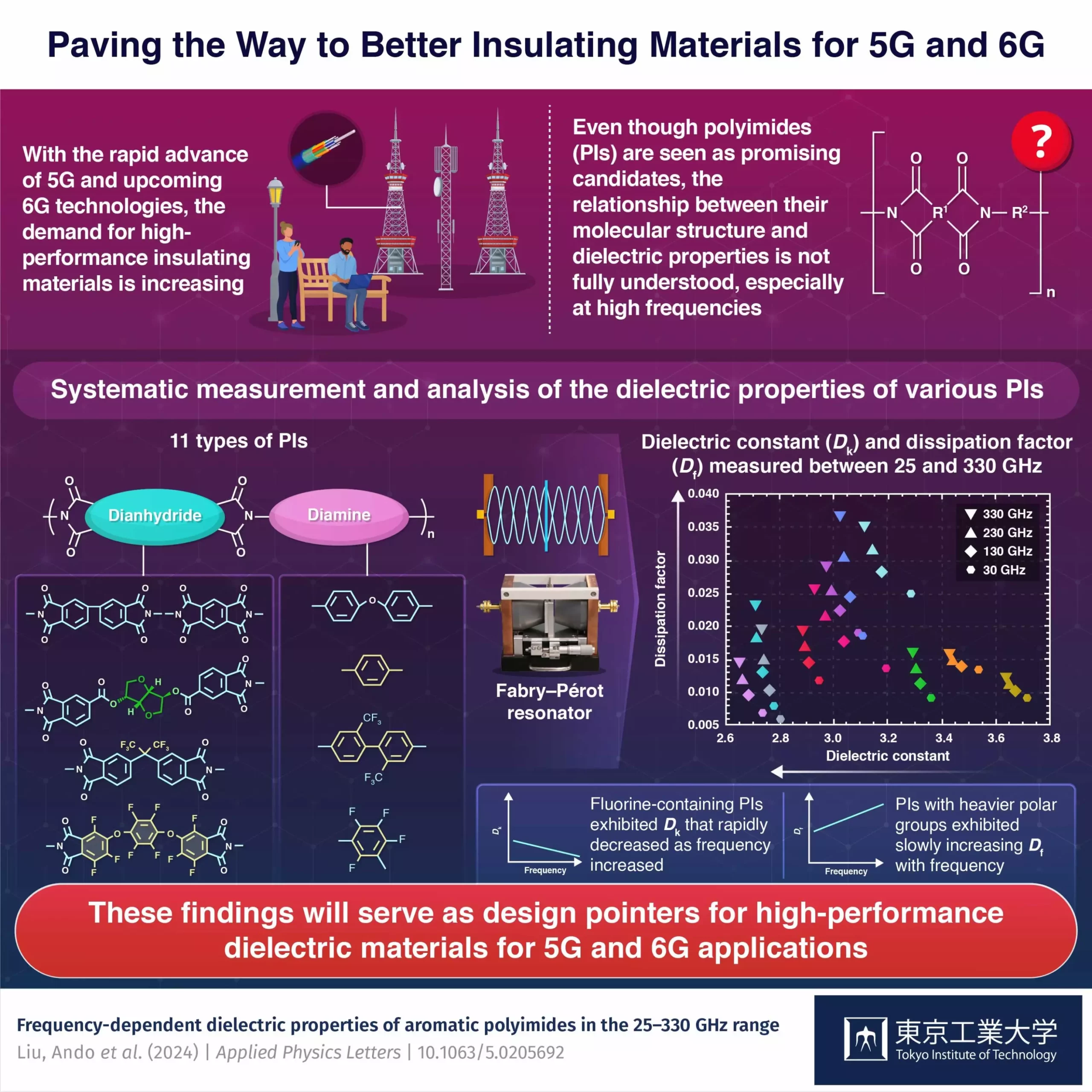As technology continues to advance rapidly, the need for faster and more reliable wireless communication systems is becoming increasingly crucial. With the development of 5G technologies, researchers are already looking ahead to 6G and exploring new ways to overcome the challenges associated with operating at extremely high frequencies.
One of the most significant challenges in both 5G and future 6G technologies is the detrimental effects of operating at frequencies nearing the terahertz range. Signal attenuation and interference become more prominent at these high frequencies, making it difficult to maintain signal integrity. Insulating materials with exceptional dielectric properties are essential to mitigate these issues.
Polyimides (PIs) have emerged as potential materials for high-frequency operation due to their excellent thermal stability, mechanical toughness, flexibility, lightweight, and favorable dielectric properties. A research team from Tokyo Institute of Technology, led by Professor Shinji Ando, conducted a study on 11 PIs with different molecular structures to explore their dielectric properties.
Using a Fabry–Pérot resonator, the researchers measured the dielectric constant (Dk) and dissipation factor (Df) of the polyimides in the 110–330 GHz range. The results showed that PIs with higher fluorine content exhibited lower Dk values, indicating better dielectric properties. In particular, a perfluorinated polyimide showed significantly lower Dk and smaller Df compared to other polyimides. The frequency dependence of Dk and Df was also found to be minimal.
Implications for 6G Technologies
The findings of this study provide valuable insights into the dielectric qualities of PIs and their potential applications in high-frequency telecommunications. The data could pave the way for faster and more reliable communication systems by enabling engineers to utilize the terahertz range effectively. Further research, including spectroscopic studies in the THz range, will be essential to identify the best type of PIs for 6G technologies.
Polymeric materials, particularly polyimides, show promise as insulating materials for 6G technologies. Their unique properties make them suitable for high-frequency operation, opening up new possibilities for faster and more efficient wireless communications. With continued research and development, polymer-based insulating materials could play a vital role in the future of telecommunications.



Leave a Reply